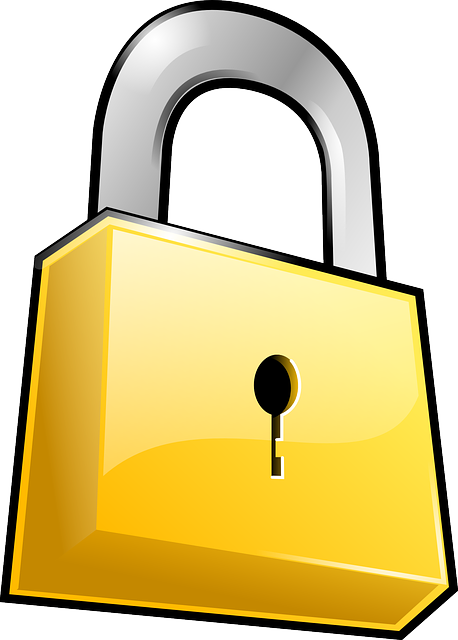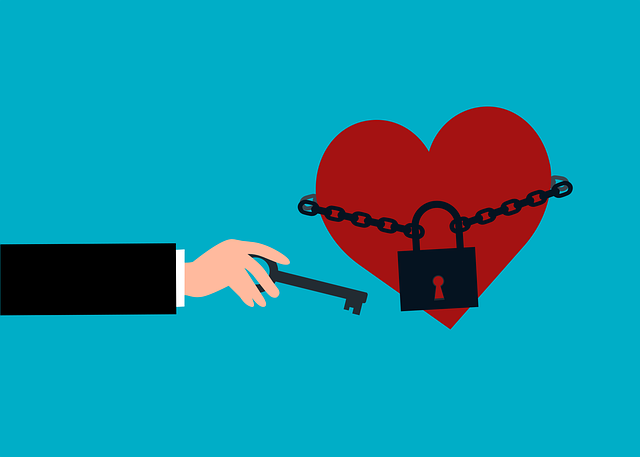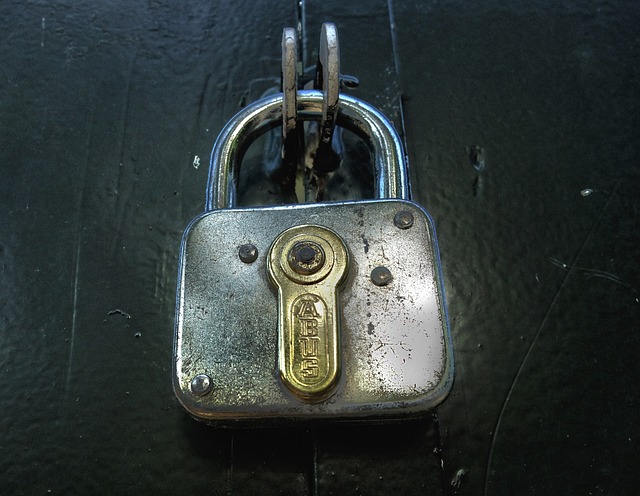Access control systems bolstered by smart lock and keyless door lock technologies have revolutionized both cybersecurity and physical security across residential and commercial sectors. These advanced systems offer customizable access permissions that are adaptable to recognize authorized users through biometric identifiers or dynamic passwords, ensuring secure entry while preventing unauthorized access. The real-time monitoring and remote management capabilities allow for the control of temporary access, immediate revocation of permissions, and instant alerts upon any breach attempts. These systems provide an audit trail for security, enhance user convenience with integration into home automation, and are continuously updated to adapt to evolving security threats. The strategic adoption of these technologies is pivotal in modernizing security protocols, with smart locks at the forefront of this transformation, offering a secure yet flexible alternative to traditional keys. Organizations must tailor their access control strategies using these systems, ensuring that they align with unique operational requirements and provide advanced security features like multi-factor authentication to maintain a robust cybersecurity defense. Regular updates, maintenance, and adherence to protocols are key to preserving the integrity of sensitive data and operational security. Staying abreast of advancements in smart lock technologies is essential for proactive security management and maintaining an effective access control system.
In an era where cybersecurity threats loom and physical security demands a tailored approach, personalized access control plans are transforming the way we safeguard our spaces. This article delves into the sophisticated world of ‘access control,’ ‘smart locks,’ and ‘keyless door lock’ technologies that offer enhanced security measures. We’ll explore how these systems can be customized to fit unique needs, from understanding their mechanisms to implementing best practices for maintenance. Join us as we navigate the intersection of innovation and protection, ensuring your premises are secure with cutting-edge solutions designed just for you.
- Understanding Personalized Access Control Systems
- The Role of Smart Locks in Enhancing Security
- Keyless Door Lock Technologies: A Comprehensive Overview
- Customizing Your Access Control Plan for Maximum Security
- Best Practices for Implementing and Maintaining Personalized Access Control Solutions
Understanding Personalized Access Control Systems

In the realm of cybersecurity and physical security, personalized access control systems represent a sophisticated layer of defense for both residential and commercial premises. These systems go beyond traditional lock-and-key mechanisms by leveraging smart locks and keyless door lock technologies to provide tailored access permissions. A key component of these systems is their adaptability; they can be configured to recognize authorized users through biometric identifiers like fingerprints or facial recognition, or via dynamic passwords and digital tokens. This level of specificity ensures that only the intended parties can gain entry, effectively mitigating unauthorized access risks. The integration of smart locks within access control plans also allows for real-time monitoring and remote management, enabling security personnel or homeowners to grant temporary access, revoke permissions instantly, and receive alerts in the event of a breach attempt. By adopting such personalized access control solutions, entities can fortify their defenses against potential intruders, ensuring that sensitive areas remain secure while facilitating seamless and convenient entry for authorized individuals.
The Role of Smart Locks in Enhancing Security

In modern security frameworks, smart locks serve as a cornerstone technology within personalized access control plans. These intelligent devices transcend the traditional key-based locking mechanisms by offering keyless door lock solutions that are not only convenient but also significantly more secure. Smart locks utilize advanced encryption protocols and authentication methods, such as biometric identification or unique access codes, to ensure that only authorized individuals can gain entry. This leap from mechanical to digital security measures enhances both physical and cyber security, deterring unauthorized access and providing a comprehensive audit trail of who entered a space and when.
The integration of smart locks into access control strategies is a testament to the evolution of home and business security. These keyless door lock systems can be remotely managed through mobile applications or web interfaces, allowing users to grant temporary access, set schedules for automatic locking and unlocking, and receive real-time alerts in the event of an attempted breach. Such features not only bolster security but also offer greater flexibility and control over who enters sensitive areas, thereby making them indispensable tools in a robust personalized access control plan. The adoption of smart locks is a strategic step towards leveraging technology to mitigate vulnerabilities and enhance overall protection against potential security threats.
Keyless Door Lock Technologies: A Comprehensive Overview

In the realm of personalized access control plans, keyless door lock technologies have become a cornerstone for enhanced security in both residential and commercial settings. These smart locks offer a blend of convenience and advanced security features, eliminating the need for traditional keys. With options ranging from biometric locks that use fingerprints to electronic keypad systems and RFID-enabled devices, users can tailor their access control systems to their specific needs. The integration of these technologies allows for real-time updates to access permissions, ensuring that only authorized individuals can enter sensitive areas. Moreover, the encryption of digital keys used in smart locks significantly reduces the risk of unauthorized key copying and lock picking, which are vulnerabilities inherent in traditional lock systems.
The adoption of smart lock technologies has been driven by their interoperability with home automation systems, enabling users to monitor and control access remotely through integrated apps on their smartphones. This level of connectivity not only enhances security but also provides users with the ability to create temporary digital keys for visitors or service personnel, which can be revoked at any time after their departure. Additionally, these locks often come equipped with features such as tamper detection, automated lockdown procedures, and event logging, all of which contribute to a more secure and manageable access control environment. As cybersecurity measures continue to evolve, keyless door lock technologies are poised to become even more sophisticated, further solidifying their role in the future of personalized security solutions.
Customizing Your Access Control Plan for Maximum Security

In the realm of cybersecurity, personalized access control plans play a pivotal role in safeguarding sensitive data and critical systems. Tailoring your access control strategy to fit the unique needs of your organization is not just about following best practices; it’s an essential step towards robust security posture. Implementing a smart lock system, for instance, allows for dynamic access permissions that can be adjusted in real-time based on user roles and activities. This level of granularity ensures that only authorized personnel have access to specific areas or data, effectively mitigating unauthorized access risks. Furthermore, integrating keyless door locks as part of a comprehensive smart security system not only streamlines entry processes but also provides an audit trail of who accessed what and when, which is invaluable for both security and compliance purposes. These systems often employ multi-factor authentication, adding an additional layer of protection against potential breaches. By continuously evaluating and refining access control protocols with cutting-edge technology like smart locks and keyless entry systems, organizations can significantly enhance their overall security measures.
Best Practices for Implementing and Maintaining Personalized Access Control Solutions

In the realm of cybersecurity, personalized access control plans are pivotal for safeguarding sensitive data and maintaining operational integrity. Implementing such solutions begins with a thorough assessment of the organization’s security needs and the potential risks involved. It is imperative to integrate smart locks and keyless door lock systems that align with these requirements, ensuring they offer both convenience and enhanced security. These systems should be equipped with robust authentication mechanisms, including biometrics or multi-factor authentication, to prevent unauthorized access. Regular updates and maintenance are crucial to address software vulnerabilities and adapt to evolving threat landscapes. Organizations must also establish clear protocols for user access permissions, regularly reviewing and adjusting them based on employee role changes or departures to maintain a secure environment.
Maintaining personalized access control plans is as critical as their initial implementation. To keep these systems effective, it is essential to monitor access logs and identify any unusual patterns that could indicate security breaches. Proactive measures, such as conducting periodic security audits and updating access privileges, are necessary to ensure the integrity of the system. Additionally, staying abreast of technological advancements in smart lock and keyless door lock technologies can provide an extra layer of security. By integrating these cutting-edge solutions, organizations can protect against both physical and digital intrusions, thereby safeguarding their assets and maintaining a secure operational environment. Regular training for staff on the use of these systems and the importance of adhering to access control protocols reinforces the overall effectiveness of the security measures in place.
In conclusion, personalized access control represents a significant evolution in security measures, offering tailored solutions that fortify our digital and physical environments. The integration of smart locks and keyless door lock technologies, as discussed, plays a pivotal role in this advancement, providing flexibility, convenience, and enhanced protection. By customizing your access control plan with these cutting-edge systems and adhering to best practices for implementation and maintenance, individuals and organizations alike can significantly bolster their security posture against unauthorized access and threats. Embracing personalized access control is not just a step towards securing properties but a commitment to safeguarding sensitive information and maintaining privacy in an increasingly connected world.
